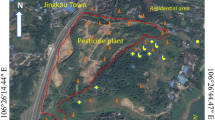Abstract
Wildlife contamination studies found high levels of DDT and associated metabolites in bird eggs from Canadian orchard sites during the early 1990s. The present study investigated local dietary uptake of DDT and geographic variability in tissue concentrations in the same orchards. A soil–earthworm–robin food chain was chosen for study, as early surveys showed that robins contained the highest levels of DDT of several avian species and because published research indicated that earthworms were a probable dietary exposure route. Organochlorine pesticides and PCBs were measured in soil, earthworm, robin egg, and robin nestling samples collected from fruit orchards and reference sites. High average DDE (soil: 5.2 mg/kg; earthworm: 52 mg/kg; robin egg: 484 mg/kg dry weight) and DDT (soil: 9.2 mg/kg; earthworm: 21 mg/kg; robin egg: 73 mg/kg dry weight) concentrations in Okanagan (British Columbia) samples confirmed that previously recorded contamination was common in the region. Concentrations detected in Simcoe, Ontario, orchards were not as high but were still significantly elevated relative to levels in soils and robins from reference areas. Significant positive linear regressions between soil and earthworm concentrations and consistent trends in food chain accumulation suggested that robins were acquiring DDT and metabolite (DDTr) burdens locally. Low concentrations of DDT and DDTr in robin eggs collected from nests in nearby nonorchard and post-DDT orchard habitats suggested that the local sources were in orchards. Persistence of DDT in orchard food chains is likely due to a combination of retarded degradation rates for DDT in soil and its extensive use historically. DDT concentrations in some robin eggs and earthworms were at levels comparable to those observed in field studies where mortality or reproductive effects occurred.
Similar content being viewed by others
Author information
Authors and Affiliations
Additional information
Received: 18 October 1999/Accepted: 13 March 2000
Rights and permissions
About this article
Cite this article
Harris, M., Wilson, L., Elliott, J. et al. Transfer of DDT and Metabolites from Fruit Orchard Soils to American Robins (Turdus migratorius) Twenty Years After Agricultural Use of DDT in Canada. Arch. Environ. Contam. Toxicol. 39, 205–220 (2000). https://doi.org/10.1007/s002440010098
Issue Date:
DOI: https://doi.org/10.1007/s002440010098




